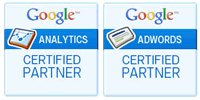The Digital World of Advertising continues to evolve, and Display Banner Advertising has risen rapidly to play a significant role for keeping businesses in top of minds to the right audience. Say, Bye to the Era of “Spray and Pray Advertising” and Hi to the era of “Smarter Targeted Display Advertising” today. According to comScore, an average person is served 1,700 banner ads every month. So, what are the latest trends and advancements in the field of Display Advertising that businesses need to be embrace today to be effective? Let’s take a look.
Programmatic Buying:
All marketers have a common goal – connect with the right people with appropriate messages in the moments that matter. Automated buying, machine-based buying or programmatic – call it what you may – is the technology fundamentally changing the way media is bought and sold. Through Real time bidding (RTB) algorithms, the process of buying, placement and optimization of media inventory are automated to deliver the best mix of exposure and ROI by cost-effective means. Through platforms such as DoubleClick, businesses are deploying smarter display advertising to deliver relevant, engaging experiences to their target audience, thus earning brand love and ROI.

Viewability:
An ad served does not necessarily mean that the ad has been viewed by the users online. A display ad is considered viewable when 50% of an ad’s pixels are in the view of the user’s screen for a minimum of one second. Google released statistics in Oct 2014 that only 44.6% of online ad impressions are viewable. The position of ad on a web page, the size of ads, the industry segment, the ad caters are few of the factors that influence the viewability of an ad. With view-through conversions driving significant ROI in recent times, the industry is shifting towards valuing and earning viewable ad impressions than a served ad impressions.
Context (Relevance):
Nearly, 25 billion display ads served every day online by Google alone, the online user is flooded with banner ads when surfing the internet. Ad blocking software has seen rapid adoption in recent years, where the usage has grown from 21 million in 2009 to 198 million as of June 2015. It is estimated, that total $21.8 billion of global ad revenues have been lost due to this so far in 2015.

So, the context in which the ad is served becomes a vital component in attracting the attention of online user. A user who is researching on a vacation, he/she is planned would rather find vacation packages ads to be intriguing than a Japanese comic book ad. Essentially, context of ad served is starting to gain importance in positioning a brand’s reputation, reaching a relevant audience and ensuring the most value is extracted from the budget being invested.
Cookies – A Things of the past:
As the major shift for internet access is happening towards mobile devices, it’s becoming essential for marketers to follow their audience across various devices they used to always stay in front of their mind. Not long ago, retargeting involved simple cookies, which followed customers around the web and displayed banner ads where allowed. With Online piracy being a top concern, online users are starting to have their cookies disabled.To address this, sophisticated retargeting solutions are started to rely on users online IDs and profiles to be able to serve relevant ads.
Social platforms such as Facebook and Twitter have a big advantage here where unique and persistent account IDs are used by users across devices. Digital giants like Google, Amazon, eBay as well as some premium publishers, retailers and app developers have large number of consumers logged into their sites. The first-party user data available through these login IDs enable sophisticated audience targeting capabilities for Display Advertising.

Final Thoughts:
It’s exciting to see technological advancements happening in the field of Display Advertising to help businesses succeed in reaching out to their target audience effectively and delivering relevant display ads.
What are your plans to implement your Display Advertising campaigns in line with these trends? What other trends are you observing or predicting for future? Share your thoughts here.








